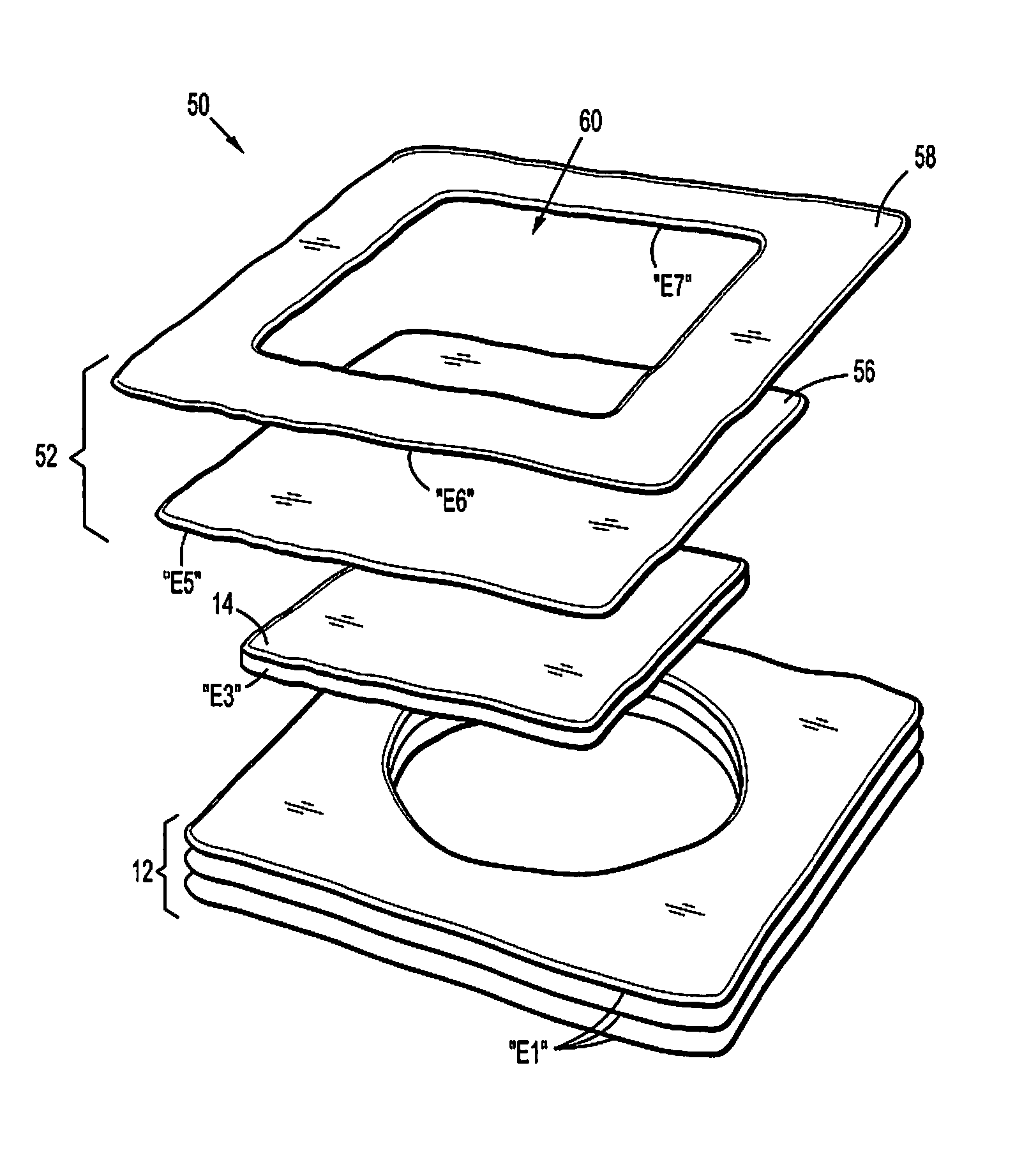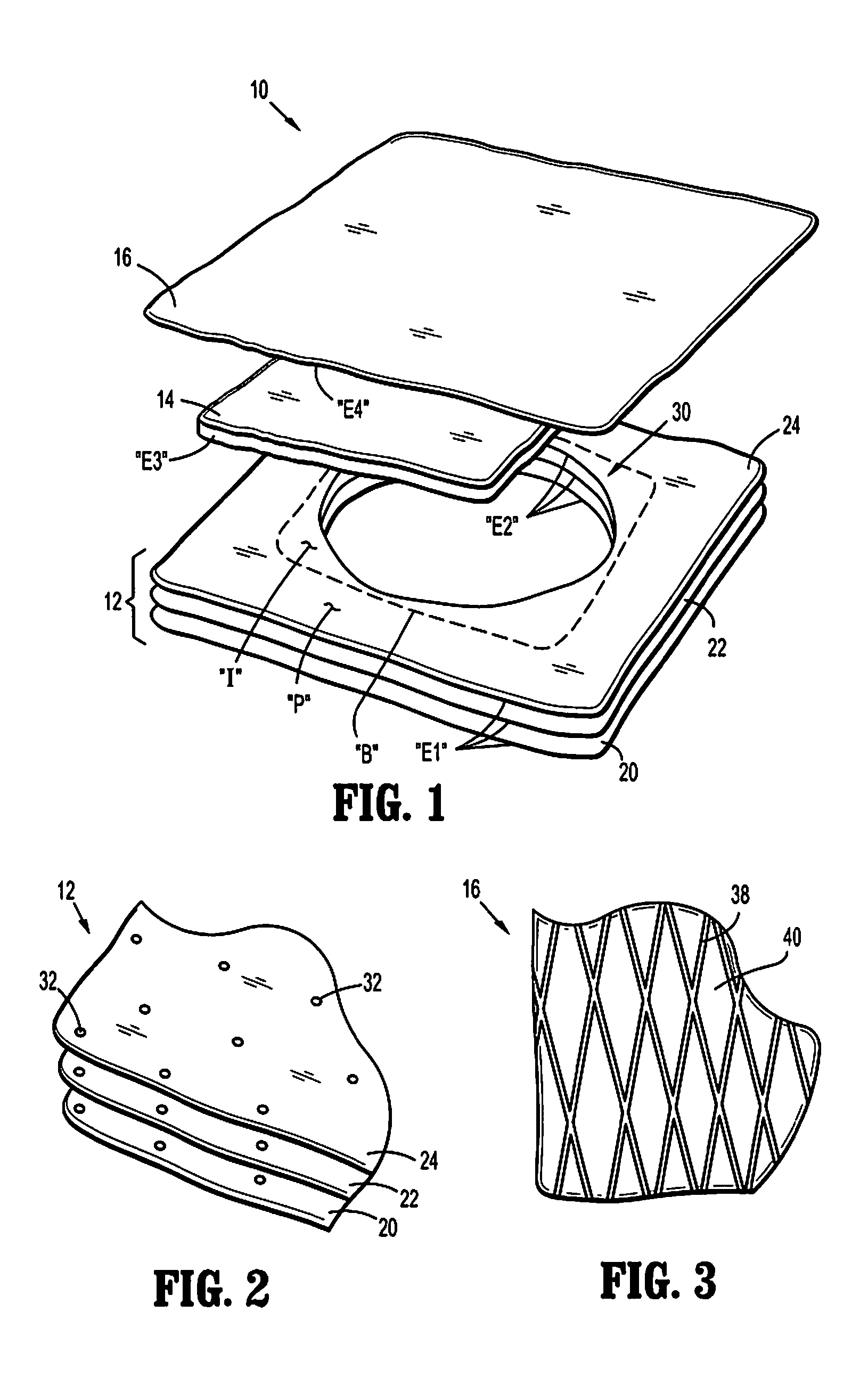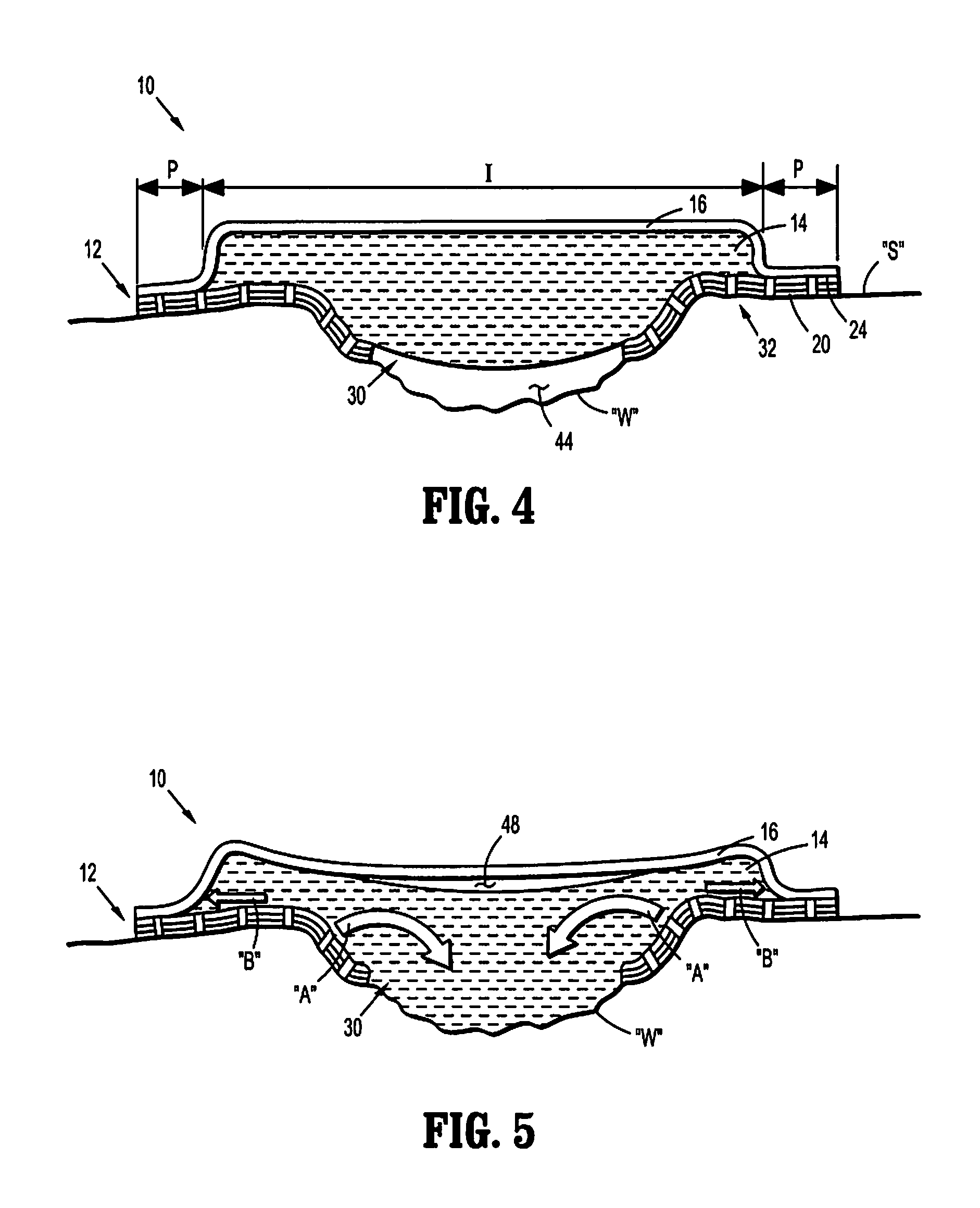Wound dressing with advanced fluid handling
a wound dressing and fluid handling technology, applied in the field of wound dressings, can solve the problems of reducing the ability of wound dressings to adhere to the skin, affecting the effectiveness affecting the effect of wound dressing bacterial barrier,
- Summary
- Abstract
- Description
- Claims
- Application Information
AI Technical Summary
Benefits of technology
Problems solved by technology
Method used
Image
Examples
Embodiment Construction
[0019]The attached figures illustrate exemplary embodiments of the present disclosure and are referenced to describe the embodiments depicted therein. Hereinafter, the disclosure will be described in detail by explaining the figures wherein like reference numerals represent like parts throughout the several views.
[0020]Referring initially to FIG. 1, a wound dressing 10 includes a composite contact layer 12, an intermediate absorbent member 14 and a backing layer 16. These components 12, 14, 16 are superimposed and adhered with one another to form the unitary dressing 10. The contact layer 12 is disposed on a distal or wound-facing side of the dressing 10, and is adapted for contact with a patient to secure the dressing 10 over a wound “W” (see FIG. 4). The backing layer 16 is disposed on a proximal, or non-wound facing side of the dressing 10, and extends laterally beyond the absorbent member 14. As described in greater detail below, the backing layer 16 may be adhesively coupled to...
PUM
 Login to View More
Login to View More Abstract
Description
Claims
Application Information
 Login to View More
Login to View More - R&D
- Intellectual Property
- Life Sciences
- Materials
- Tech Scout
- Unparalleled Data Quality
- Higher Quality Content
- 60% Fewer Hallucinations
Browse by: Latest US Patents, China's latest patents, Technical Efficacy Thesaurus, Application Domain, Technology Topic, Popular Technical Reports.
© 2025 PatSnap. All rights reserved.Legal|Privacy policy|Modern Slavery Act Transparency Statement|Sitemap|About US| Contact US: help@patsnap.com



